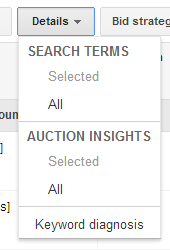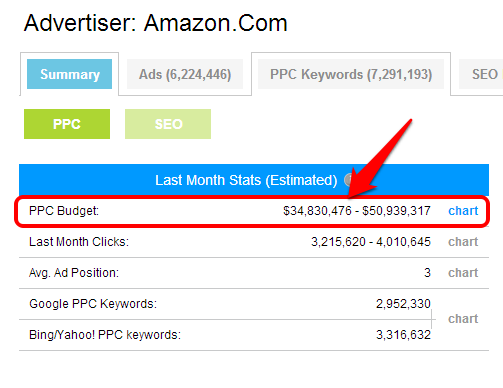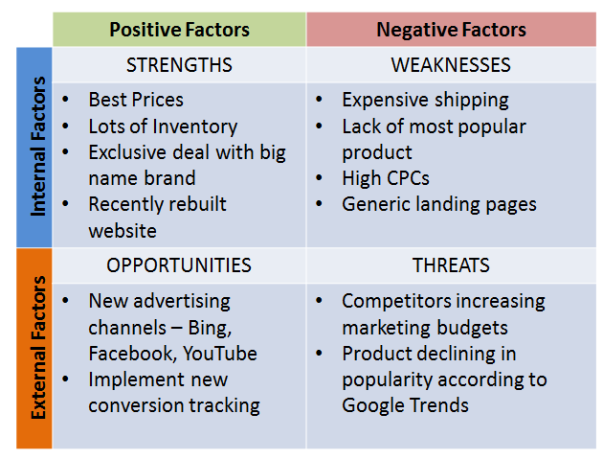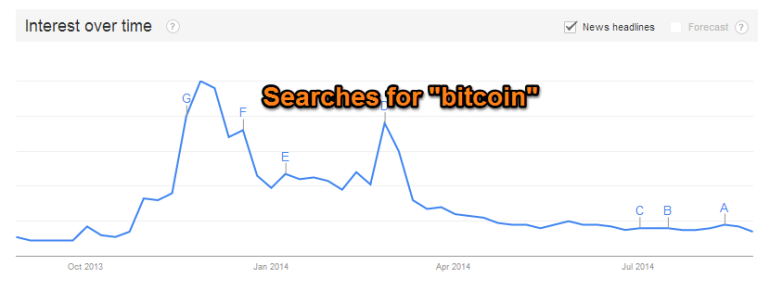“If you know the enemy and know yourself, you need not fear the result of a hundred battles. If you know yourself but not the enemy, for every victory gained you will also suffer a defeat. If you know neither the enemy nor yourself, you will succumb in every battle.”
Sun Tzu – The Art of War PPC
Let’s face it – managing a PPC account doesn’t happen in a vacuum. We tend to think that it does as most of our direct interactions happen inside platforms like AdWords or Bing. It’s easy to lose sight of the fact you aren’t up against AdWords. You can’t beat Google. How hard you have to work to “win” at PPC isn’t just a case of “are you good at AdWords?”
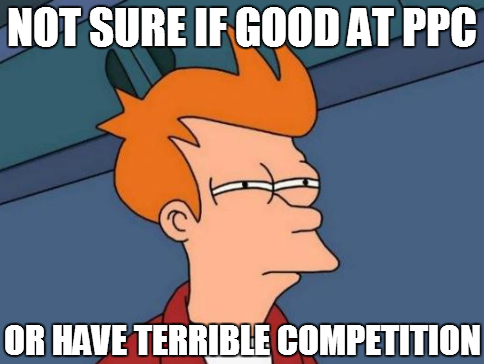
You can have the most perfectly run account in the world but success will ultimately come down to the amount and quality of competition your business is up against. It’s the unfortunate nature of the bidding model that powers the advertising platforms we rely on. Too much competition can price you out of the game. Too little competition and you end up resting on your laurels.
However, let’s not get too depressing. There’s an array of options to choose from when you start to slip against your competition. That’s where good quality competitive analysis comes in.
Why Is Competitive Analysis Important?
- It prevents us being caught out by a shifting market landscape
- Allows for more accurate projecting and benchmarking
- We can steal borrow ideas to improve our own marketing efforts
So how do we make inroads with this stuff? How do we actually do something useful with this blog? Here’s the methodology I employ with all my accounts:
Check The Auction Insights Tool
The first thing I do when I need to know who I’m up against is go to the Auction Insights tool. You can find it in the Keywords Tab of your AdWords account under (surprise, surprise) “Auction Insights”:
There’s a couple of metrics in here that are incredibly useful. The first is the overlap rate. That will tell you the percentage of time that a competitors ad is present at the same time as yours.
How Is This Actually Useful?
- You can spy out any new competitors you hadn’t noticed.
- Top of page rate will give you an indication of how aggressive that competitor is being, and also how good of a quality score they have. If you’re at 10s and they’re above you, you can take a good guess they’re bidding higher.
- It’s free (always a plus, right?)
Use Competitor Analysis Tools
There are plenty of tools out there but here are the three I use most frequently:
How Are They Useful?
- You can keep track of your competitors spends.
- See which ad messaging is most successful for your competition.
- Find any successful keywords you might not be bidding on but that competitors are.
Here’s what we find with iSpionage if we were to take a look at Amazon’s PPC spend:
It’s interesting to see that Amazon’s strategy seems to be aimed at targeting third position.

Instantly we’ve learned something really interesting about how Amazon is treating paid search. With most of my clients we push heavily during the run up to Christmas as our return on ad spend (ROAS) is normally so good. For Amazon, they’re either being priced out of PPC due to low margins (and everyone else pushing) or turning down PPC because they don’t need the volume.
Note: Based on my experience the PPC spend metrics from these platforms can be a little off. However, taking an average of the three tools tends to be a good way to get an accurate approximation.
SWOT’s Your Problem?
How are you going to run a successful PPC campaign if you don’t know your own strengths and weaknesses?
A SWOT analysis should go hand in hand with any good competitive research. It will help you frame yourself against your competition so you know what you can fight them on and what you will lose fighting on.
The idea with this is to look a little deeper than what you see on your website. What strengths and weaknesses do you have behind the scenes? What do you have to be careful about?
Know Your Market’s Trends
Understanding market trends allows you to contextualize your competitors’ behaviour. An easy way to grab this data is from Google Trends:
Let’s imagine for a second that we were in the business of advertising bitcoin. Knowing that impressions are tailing off helps explain why competitors might be increasing bids and pushing up our CPCs – they’re desperate to get back the traffic they once had.
Without knowing the trend we might have falsely assumed that our competitors had increased bids or improved quality scores and taken the traffic we had back in late 2013.
Judge Competitors’ Landing Pages
If you think customers are only going to visit your site before they buy from you (or sign up in the case of lead generation) you’re sadly mistaken. According to research from Forrester, consumers visit an average of three sites before making a purchase.
That means you’re not only trying to have a good landing page experience, you need to have a better one than all of your competition!
What To Look For:
- What’s their Unique Value Proposition? Do they have a more compelling offer than you do?
- How are they creating urgency? Is there a time-sensitive reason to buy from a competitor and not from you?
- Do you trust their site more than your own? Why?
- Is there product visibly cheaper than yours?
Compare Ad Copy
I don’t advocate copying other people’s ad copy, but I always remember something my last boss said to me:
“Be unique from ads above you, and the same as the good ads below you”
This was a particular issue we encountered in comparison shopping. You wouldn’t believe the amount of ads that contained the headline “Top 10 [Product]”. Hint: It was all of them.
Why? Because it worked really well when you were the only one saying it.
However, every single ad in the search results looked exactly the same:
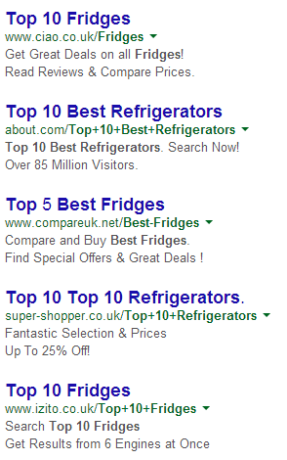
I recommend using the Google Ad Preview Tool when comparing ads to avoid any issues with session based broad matches or location targeted ads.
Things to look for:
- Are they using any extensions you aren’t? if so, find a way to utilize them.
- What’s the main benefit each competitor is offering? Have you tested advertising similar benefits (if you have them)?
- Are they using Dynamic Keyword Insertion?
- Does the ad use Title or Sentence case?
Find Your Competitive Advantage
Most consumers who visit your website will at best remember three reasons to buy / sign up with you. More likely they’ll only remember your main selling point.
It stands to reason then, that we should all be aiming to exploit our competitive advantage. The thing we do better than our competitors. Let’s see how this might work for three consumer goods sites:
Even if we know that Free Shipping is a strong message that resonates with customers, using that messaging won’t help us stand out as Competitor B also offers it. At best it’s a wash.
From doing our research we can see that we offer a better product than our competitors. Neither competitor can demonstrate they have a higher quality product. Let’s advertise that fact!
What if you’re worse than your competitor in every way? That’s tricky but can be the case when you’re up against the Amazons of the world. Your best bet is to play on comparative advantage. If you’re small and they’re big then you’re a niche specialist and you’d better have a lot of options and advice for me.
If there really is nothing that makes you stand out, advertise your site’s best feature that other advertisers currently aren’t.
Finally, Take Action!
Talking about competitive research is just the first step. To get value out of it make sure you…
- Check for competitor shifts regularly. Every month do a quick 30 day check of the Auction Insights report and see if anything has shifted drastically.
- Figure out what your competitive advantage is. Test it!
- Refresh your ad copy if competitors steal it. Find a way to be unique and interesting.
- Create new landing pages that beat the offers, promises, urgency and value proposition of your competitors.
Do these things and you’ll be ahead of 95% of the other advertisers out there. Remember that PPC success is about beating your competitors – it’s not about beating Google.
How do you deal with shifting landscapes in your PPC accounts? As always share your best tricks and tips in the comments below!
Featured image courtesy of Keoni Cabral.




